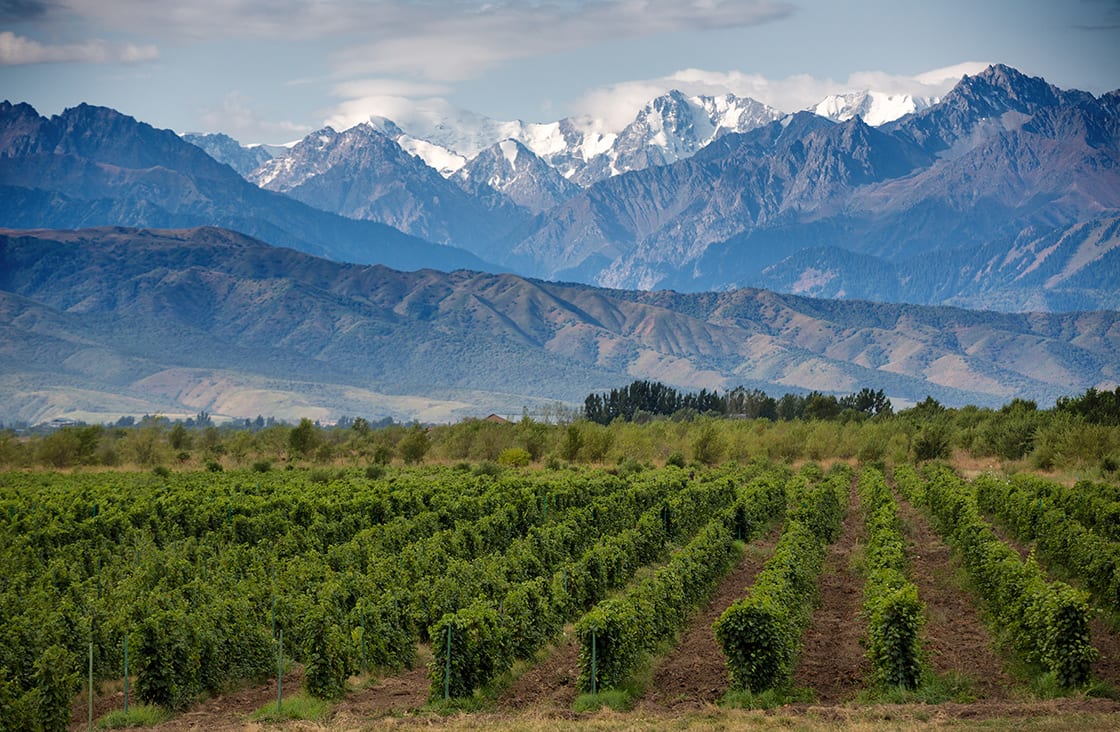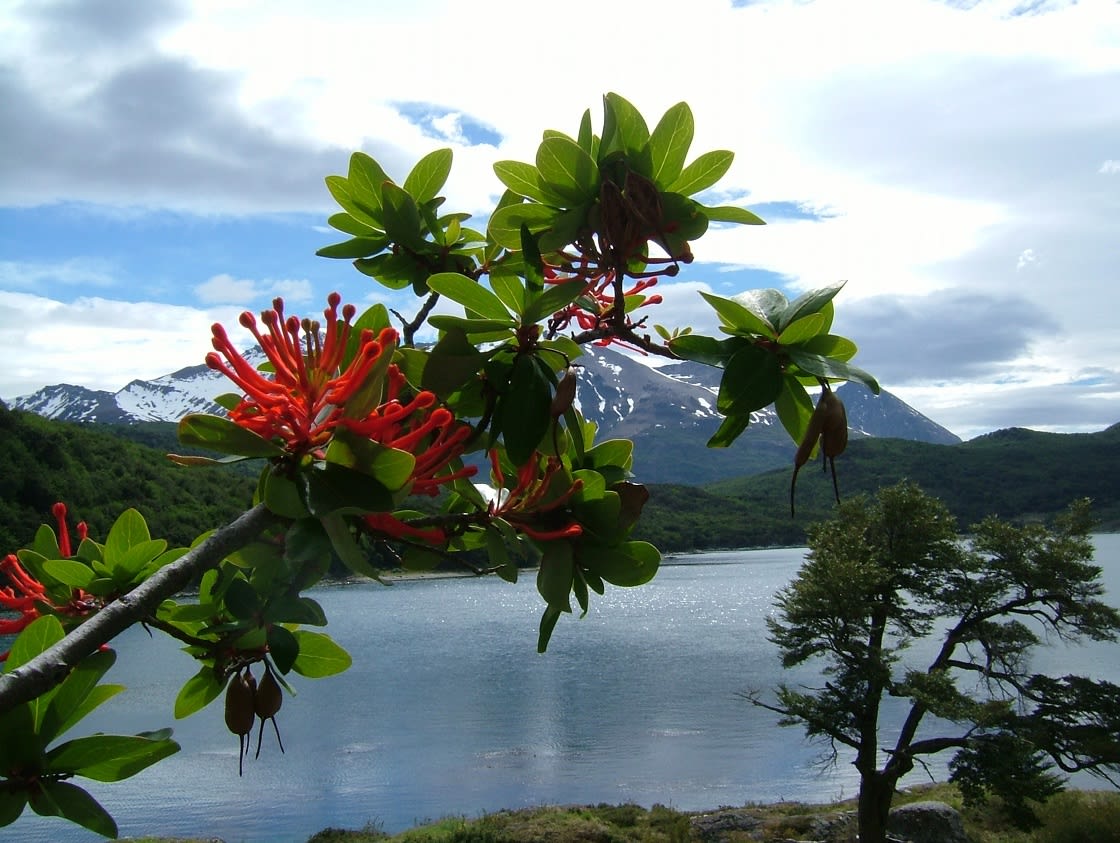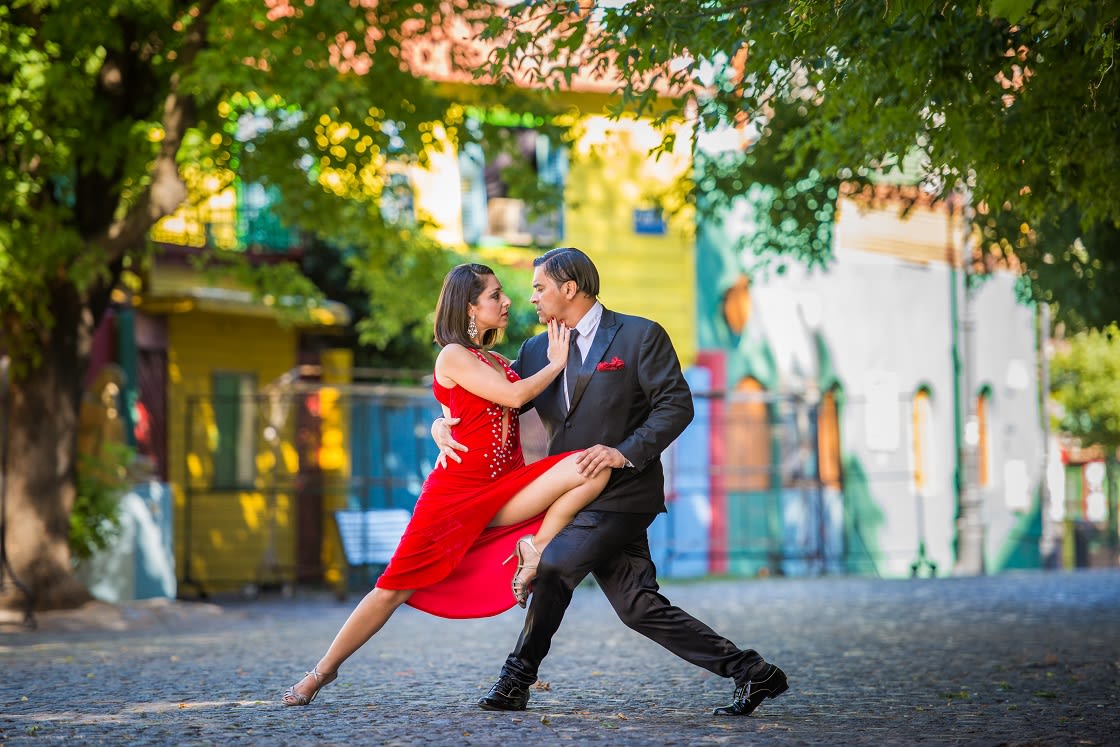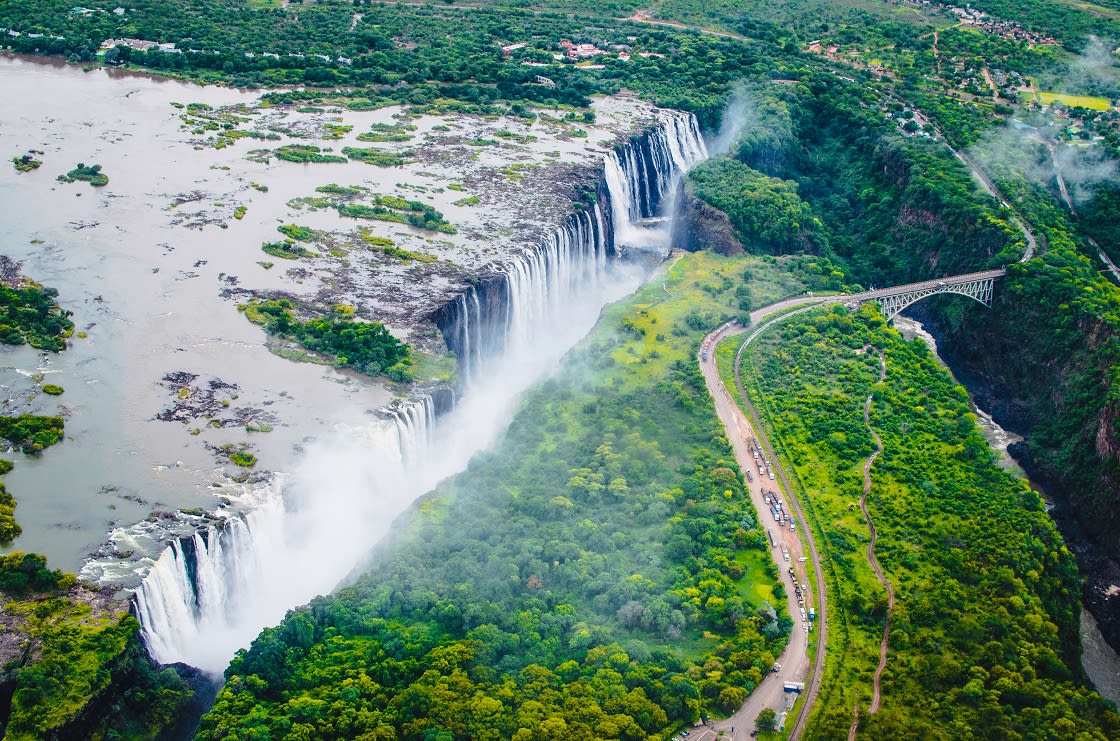
If you are wondering when to visit Argentina, much depends on where you plan to go and what you want to see and do. Apart from the subtropical Mesopotamia region in the country’s northeast, Argentina is in the temperate zone, meaning it has cool, dry weather in the south and is warmer and humid in the center. January and February are the hottest months in much of the country when temperatures can reach 100°F / 38°C. The winter months, between July and October, can get quite cool. The best time to visit Argentina is in the spring (September – November) and the fall (March – May). Summer (December – February) allows for the easiest access to the popular Patagonia region and Ushuaia in the south, while between September and December (spring/ early summer) are great months if you prefer a cooler environment in Buenos Aires. Between March and May (fall), the autumnal colors of the wine valley in Mendoza are truly magnificent.

Intense Red Flowers Of Notro or Ciruelillo, Blossoms During Spring Time
From September to November, Argentina enjoys its spring season, which offers consistently warmer days, reduced humidity, lush landscapes, and pleasant comfortable weather for exploration. In Buenos Aires, temperatures are warmer and can reach highs of 71°F / 22°C and lows of 57°F / 14°C.
Whether you are in the city, out on the pampa, or exploring the mountains of Patagonia, spring is the ultimate season in which to visit the Southern Cone. November is a particular highlight due to the blossoming jacaranda trees, and temperatures are warm in Buenos Aires. In the Pampas, you can visit and stay at cattle and sheep ranches, known locally as estancias, and trail ride with the gauchos (Argentine cowboys). In southern Argentina, near Patagonia, you can expect cooler weather, which is quite nice during days of high activity, such as hiking and glacier trekking.
At Salta in Argentina’s northwest, you can ascend 10,000 feet into the Andes on the “Train to the Clouds”, see the stunning Hill of Seven Colors (Cerro de Los Siete Colores) in Purmamarca, and the Salinas Grandes salt plain. This part of the country tends to be relatively mild year-round, yet rainy in summer.

Couple Dancing Tango In Buenos Aires
Summer weather in Argentina heats up with highs of 84°F / 29°C in Buenos Aires. It can be hot and humid in the city, especially during the crowded peak season. Rain isn’t as common during this time of the year, though Buenos Aires can experience plenty of cloud cover in December. During January and February, the city enjoys clearer, sunnier days.
One of the best things to do in Argentina in summer is to go hiking. From December to February, the trails in Argentine Patagonia are most accessible, offering ideal hiking conditions, and plenty of guided activities.
This is also the season with the most festivals. Throughout major cities in Argentina, visitors can expect to see many events, from the Buenos Aires Tango Festival to Carnival. Resorts and beaches fill up over the summer, particularly between late December and January, and remain busy through to March. Patagonia is most appealing (and expensive) in the warmer and longer days of summer. The Andes Mountains in the country’s northwest, known for outdoor and adventure activities such as trekking, fishing, hiking, rafting, and rappelling, get very cold in winter, so are best seen from December to February.

Hiking In Patagonia, Argentina
In general, fall in Argentina means slightly cooler temperatures, although northern Argentina is still pretty warm. This is a great time to visit as the summer season crowds tend to taper off, especially in Patagonia and along the Atlantic coast.
Mendoza, Argentina’s famed wine region, hosts the National Grape Harvest Festival of Argentina in time for the start of the harvest during the first week of March. With the vineyards turning color in the fall, the region will be bursting with hues of red, and, of course, excellent wines. Wine sampling tours through the various vineyards of Mendoza, from boutique, family-owned businesses to major wine cultivators, will ensure that you get to sample the best South American wines. From Mendoza, you can take day trips to the Andes, a bike ride through vineyards, or go whitewater rafting.
April is the peak fall season, and Patagonia (where temperatures drop down to 49°F / 9°C) and Tierra del Fuego are a joy to explore at this time as the landscape transforms into fiery fall colors start filling the forests before the temperatures begin to plummet. Buenos Aires cools off to temperatures of 72°F / 22°C, and northern Argentina (Salta) stays around 74°F / 23°C.

Llao Llao Ski Resort, Bariloche
Winter in Argentina is relatively brief, with the coldest month of the year being July. In Buenos Aires, temperatures drop to 47°F / 8°C. Whereas in Argentine Patagonia, temperatures can drop as low as 30°F / -1°C. With the weather transforming into colder conditions, the ski resorts of the Andean Mountains start to fill up with travelers for the May to September ski season, which is at its busiest from June to August. It is also in late June that you can experience some of the best whale watching in Peninsula Valdes, in southern Argentina.
The northern reaches of the country are also great to visit at this time as the cool temperatures offer pleasant sightseeing conditions. July and August can be wonderful months to explore Buenos Aires. The evenings in the city are generally cooler in temperature and the mornings are fresh with crisp air. During winter, many beach towns and resorts close down.

Victoria Falls In Iguazu
Due to its location close to the equator, there is never really a bad time to visit the Iguazu Falls in terms of the weather, and even though the temperature does fluctuate a little bit throughout the year, it rarely drops below 50 °F / 10°C. What really determines the best time to visit the falls depends on what you want to get out of your experience. Argentineans are on holiday from January to February, making this one of the busiest times to visit the falls along with Easter. If you want to skip the crowds then you should avoid traveling during this time.
The rainy season, from December to March, sees higher temperatures, a lot of humidity, and high water levels, making the falls appear all the more powerful. On the downside, high water levels might make the Isla de San Martín, which is an island located in the river, inaccessible. The island spans the three levels that form the falls, and can only be reached in small boats unless the river is below the minimum level. From April through to October, blue skies prevail, making for the best photo opportunities, and the weather is much milder. However, during this time the low water levels might detract from the magnificence of the falls. Visiting the Argentinean side of the falls is all about getting up close and personal with the cascades so visiting when they are in full flow is a great way to experience them. Generally, people agree that the shoulder months of March, April, and September are the best times to go as the water levels are still reasonably high and it isn’t too hot.
While Rainforest Cruises aim to provide accurate and up-to-date information, we make no representations as to the accuracy or completeness of any information herein or found by following any link on this site. Rainforest Cruises cannot and will not accept responsibility for any omissions or inaccuracies, or for any consequences arising therefrom, including any losses, injuries, or damages resulting from the display or use of this information.




